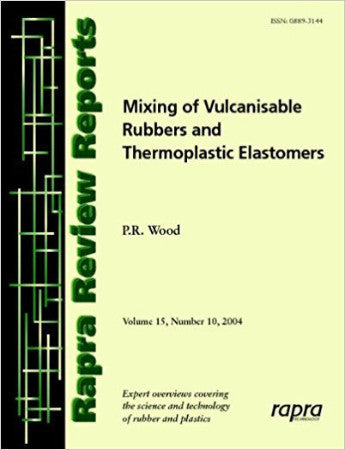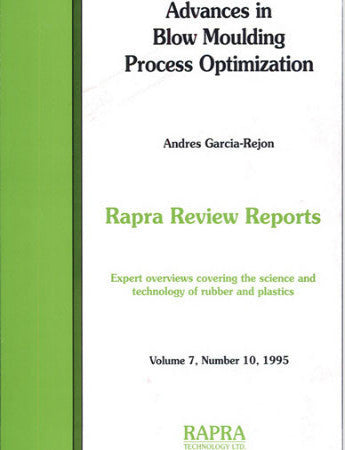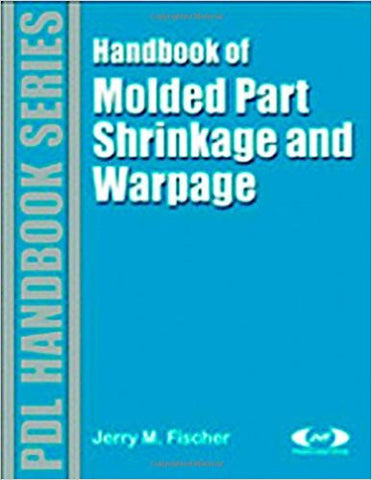Mixing of Vulcanisable Rubbers and Thermoplastic Elastomers
This report describes the current state of the art in mixing from a practical viewpoint.
Developments that have taken place in mixing equipment over the last eight or nine years have been significant, with almost all major machinery makers having made innovations of one type or another. Some developments have been as small as re-profiling rotors of relatively conventional design. Others have been the introduction of completely new rotor designs, both intermeshing and tangential.
This report begins by offering historical background against which the latest developments are set. It considers both batch and continuous systems, containing details of key developments by equipment manufacturers such as Kobe Steel, Techint Pomini, Farrel and ThyssenKrupp Elastomertechnik, with the different concepts discussed in layman’s terms. The report also summarises the range of mixing techniques applied in the industry.
The quality of rubber mixing depends not only on the mixer itself but also on control of the whole mixing process, from raw materials to the moment the compound leaves the mill room for further processing, and this review offers the relevant developments in ancillary equipment such as the drive, hopper arrangement, temperature measurement system and discharge system. Methods for monitoring mixing quality both off- and online are also covered, Recent academic research in rubber mixing is briefly considered, providing an indication of possible future practical advances in this field.
This review of rubber mixing is supported by an indexed section containing several hundred key references and abstracts selected from the Rapra Abstracts database.
Developments that have taken place in mixing equipment over the last eight or nine years have been significant, with almost all major machinery makers having made innovations of one type or another. Some developments have been as small as re-profiling rotors of relatively conventional design. Others have been the introduction of completely new rotor designs, both intermeshing and tangential.
This report begins by offering historical background against which the latest developments are set. It considers both batch and continuous systems, containing details of key developments by equipment manufacturers such as Kobe Steel, Techint Pomini, Farrel and ThyssenKrupp Elastomertechnik, with the different concepts discussed in layman’s terms. The report also summarises the range of mixing techniques applied in the industry.
The quality of rubber mixing depends not only on the mixer itself but also on control of the whole mixing process, from raw materials to the moment the compound leaves the mill room for further processing, and this review offers the relevant developments in ancillary equipment such as the drive, hopper arrangement, temperature measurement system and discharge system. Methods for monitoring mixing quality both off- and online are also covered, Recent academic research in rubber mixing is briefly considered, providing an indication of possible future practical advances in this field.
This review of rubber mixing is supported by an indexed section containing several hundred key references and abstracts selected from the Rapra Abstracts database.
1 INTRODUCTION
2 HISTORY
3 BATCH MIXING MACHINERY: DEVELOPMENTS IN RECENT YEARS
3.1 Mills
3.2 Internal Mixers
3.2.1 Definitions of Terms Used in Descriptions of Internal Mixers
3.2.2 Tangential Rotor Internal Mixers
3.2.3 Intermeshing Rotor Internal Mixers
3.2.4 Hybrid Intermeshing Rotor Developments: the Co-flow-4 Rotor
3.2.5 Other Batch Mixer Developments
3.2.6 The Tandem Mixer
3.3 How They Mix: A Comparison of Mixing Behaviour of Intermeshing and Tangential Rotor Mixers
3.3.1 Tangential Rotor Mixing Machines
3.3.2 Intermeshing Rotor Mixing Machines
3.3.3 Hybrid Rotor Mixing Machines
3.3.4 Summary of Observed Differences and Comparative Mixing Data
3.4 Around the Batch Mixer
3.4.1 Mixer Drive Systems
3.4.2 Mixer Hopper and Ram Operation
3.4.3 Mixing Temperature Measurement
3.4.4 Mixer Temperature Control Systems
3.4.5 Mixer Discharge Arrangements
3.4.6 Materials Handling Systems and Feed Systems for Batch Mixers
3.4.7 Mixing Plant Control and Data Acquisition
4 MIXING TECHNIQUES IN BATCH MIXERS
4.1 Single Stage Mixing
4.2 Two-, or Multi-Stage, Mixing
4.3 Upside Down Mixing
4.4 Variable Rotor Speed
4.5 Use of Ram Movement
4.6 Machine Temperature
4.7 Discharge of the Batch with the Ram Up or Down?
4.8 Thermoplastic Elastomer Mixing
5 DOWNSTREAM EQUIPMENT
5.1 Curable Rubbers
5.2 Thermoplastic Elastomers
6 MONITORING MIXING QUALITY
6.1 Off-Line Testing
6.2 On-Line Testing
7 DEVELOPMENTS IN CONTINUOUS MIXING MACHINERY
7.1 Single-Screw Extruders
7.2 Single Rotor Continuous Mixing Systems
7.3 Twin Rotor, Contrarotating, Non-Intermeshing Continuous Mixers
7.3.1 The Farrel Continuous Mixer (FCM)
7.3.2 The MVX (Mixing, Venting, eXtruding) Machine
7.4 Planetary Extruders
7.5 Twin Rotor Contrarotating Intermeshing Extruders
7.6 Twin Rotor Corotating Intermeshing Extruders
7.7 Ring Extruders
7.8 Other Machines
8 OPERATION OF CONTINUOUS MIXING MACHINERY
8.1 Material Suitability
8.2 Production Scale
8.3 Material Take-Off
8.4 Quality Monitoring 8.5 Comparison with Batch Mixing
8.6 Thermoplastic Elastomers
9 RESEARCH AND DEVELOPMENT
10 THE FUTURE?
Author References
Abbreviations and Acronyms
Abstracts from the Polymer Library Database
Subject Index
Company Index
2 HISTORY
3 BATCH MIXING MACHINERY: DEVELOPMENTS IN RECENT YEARS
3.1 Mills
3.2 Internal Mixers
3.2.1 Definitions of Terms Used in Descriptions of Internal Mixers
3.2.2 Tangential Rotor Internal Mixers
3.2.3 Intermeshing Rotor Internal Mixers
3.2.4 Hybrid Intermeshing Rotor Developments: the Co-flow-4 Rotor
3.2.5 Other Batch Mixer Developments
3.2.6 The Tandem Mixer
3.3 How They Mix: A Comparison of Mixing Behaviour of Intermeshing and Tangential Rotor Mixers
3.3.1 Tangential Rotor Mixing Machines
3.3.2 Intermeshing Rotor Mixing Machines
3.3.3 Hybrid Rotor Mixing Machines
3.3.4 Summary of Observed Differences and Comparative Mixing Data
3.4 Around the Batch Mixer
3.4.1 Mixer Drive Systems
3.4.2 Mixer Hopper and Ram Operation
3.4.3 Mixing Temperature Measurement
3.4.4 Mixer Temperature Control Systems
3.4.5 Mixer Discharge Arrangements
3.4.6 Materials Handling Systems and Feed Systems for Batch Mixers
3.4.7 Mixing Plant Control and Data Acquisition
4 MIXING TECHNIQUES IN BATCH MIXERS
4.1 Single Stage Mixing
4.2 Two-, or Multi-Stage, Mixing
4.3 Upside Down Mixing
4.4 Variable Rotor Speed
4.5 Use of Ram Movement
4.6 Machine Temperature
4.7 Discharge of the Batch with the Ram Up or Down?
4.8 Thermoplastic Elastomer Mixing
5 DOWNSTREAM EQUIPMENT
5.1 Curable Rubbers
5.2 Thermoplastic Elastomers
6 MONITORING MIXING QUALITY
6.1 Off-Line Testing
6.2 On-Line Testing
7 DEVELOPMENTS IN CONTINUOUS MIXING MACHINERY
7.1 Single-Screw Extruders
7.2 Single Rotor Continuous Mixing Systems
7.3 Twin Rotor, Contrarotating, Non-Intermeshing Continuous Mixers
7.3.1 The Farrel Continuous Mixer (FCM)
7.3.2 The MVX (Mixing, Venting, eXtruding) Machine
7.4 Planetary Extruders
7.5 Twin Rotor Contrarotating Intermeshing Extruders
7.6 Twin Rotor Corotating Intermeshing Extruders
7.7 Ring Extruders
7.8 Other Machines
8 OPERATION OF CONTINUOUS MIXING MACHINERY
8.1 Material Suitability
8.2 Production Scale
8.3 Material Take-Off
8.4 Quality Monitoring 8.5 Comparison with Batch Mixing
8.6 Thermoplastic Elastomers
9 RESEARCH AND DEVELOPMENT
10 THE FUTURE?
Author References
Abbreviations and Acronyms
Abstracts from the Polymer Library Database
Subject Index
Company Index




